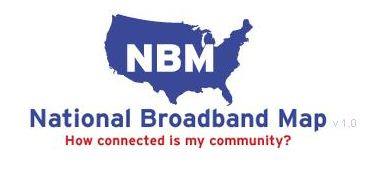NTIA, FCC Release National Broadband Map and Digital Nation Report
WASHINGTON February 17, 2011- The National Telecommunications and Information Administration in conjunction with the Federal Communications Commission unveiled the National Broadband Map along with an update to the Digital Nation report this morning. The map is available at http://www.broadbandmap.g
Editor’s Note: The following story has been corrected; see below.
WASHINGTON February 17, 2011- The National Telecommunications and Information Administration in conjunction with the Federal Communications Commission unveiled the National Broadband Map along with an update to the Digital Nation report this morning. The map is available at http://www.broadbandmap.gov/.

The map is the result of over 2 years of work. Of the $350 million over five years allocated by the federal government for broadband mapping and planning, Assistant Secretary of Commerce Lawrence Strickling estimated that approximately $200 million was being spent on broadband mapping. All 50 states, the District of Columbia and 5 territories provided the NTIA with data. The map brings together 25 million pieces of data to provide consumers, policy makers and business with an accurate picture of broadband deployment and availability. Over 1600 unique internet service providers were identified.
“The National Broadband Map shows there are still too many people and community institutions lacking the level of broadband service needed to fully participate in the Internet economy.” said NTIA Administrator Lawrence Strickling. “Through NTIA’s Broadband Technology Opportunities Program, digital literacy activities, and other initiatives, including the tools we are releasing today, the Obama Administration is working to address these challenges.”
Acting Commerce Deputy Secretary Rebecca Blank echoed the Obama administration’s commitment to broadband, saying, “Access to broadband has been a priority since the beginning. President Obama even mentioned it in his inauguration addresses and again during the most recent State of the Union.”
Preliminary findings from the data collected during the mapping show that 5 – 10 percent of Americans do not have access to the speeds necessary to use basic applications such as photo sharing, online video or web surfing.
NTIA also found that only 36 percent of Americans have access to mobile broadband of 6 mbps or greater – the current base speed of 4G. In comparison, 95 percent have access to 3G but the speeds on that service frequently dip below 1Mbps.
The map will allow users to search the data using a variety of parameters including speed, technology, and location.
The location data presented is not only the state and county level but also at the census block and metropolitan statistical area, making this the most detailed map ever released by the government.
The speed metric used by the map comes from the advertised speeds that the Internet Service Providers (ISPs) provided. The FCC has collected data on actual speeds, but NTIA choose not to integrate this with the map. According to Anne Neville, Director of NTIA State Broadband Data and Development Program, the data that the FCC collected was not expansive enough to add to the map, but she hoped to be able to add actual speed data to the map in the future, as more information is collected.
Pricing data is another one of the pieces missing from the map.
“We were unable to include price data due to its changing nature,” said Strickling during a press conference hours before the map’s release Thursday afternoon. “ISPs often offer promotional pricing along with bundled pricing which makes it difficult to determine the actual price of just the broadband offering. Since the site is only updated twice a year it would not be able to reflect the current price of services and this could confuse consumers so we felt it best not to include it.”
The map does, however, provide consumers with direct links to ISPs to find pricing along with the ability to sign up for service.
States will receive $176 million in additional funding to validate and update the data over the next five years. The map will also be updated twice a year with information received by the states and from public input. Users are able to comment directly on the site to ensure the accuracy of the information.
The website also includes analysis tools that allow users to rank data based upon their choice of inputs in addition to basic mapping functionality.
FCC Chairman Julius Genachowski highlighted that the map was created using open-source software and that its data will be available to all users. The use of open-source software will allow the NTIA and FCC to update the information quickly and allow for the integration of new tools more easily.
“We hope that using open standards and API’s software makers will use the data to create new applications to help consumers and business,” Genachowski said. “Broadband is going to be as transformative as electricity was in the 20th century”
The Digital Nation report uses data collected by the U.S. Census Bureau in October 2010 using the Current Population Survey (CPS). The most promising finding from the report was that home broadband access grew to 68 percent of households. Last year only 63.5 percent had access.
“Even though the nation has had a tough economic year it was gratifying to see the increase in home adoption of broadband,” Strickling noted.
The report continues to show that though the digital divide is still present, it is shrinking. The divide amongst rural and urban has decreased; currently 70 percent of urban households have access while only 60 percent of rural household have access.
Nationwide the largest deterrence to adoption continues to be a perceived lack of need. Nearly half of respondents to the CPS claimed that they did not need broadband, while 25 percent claimed it was too expensive. In rural areas, lack of availability is still a major factor.
A previous version of the reporting that the map was the result of $350 million in government funding, and did not note Strickling’s estimate of $200 million, over five years, for mapping.









Member discussion